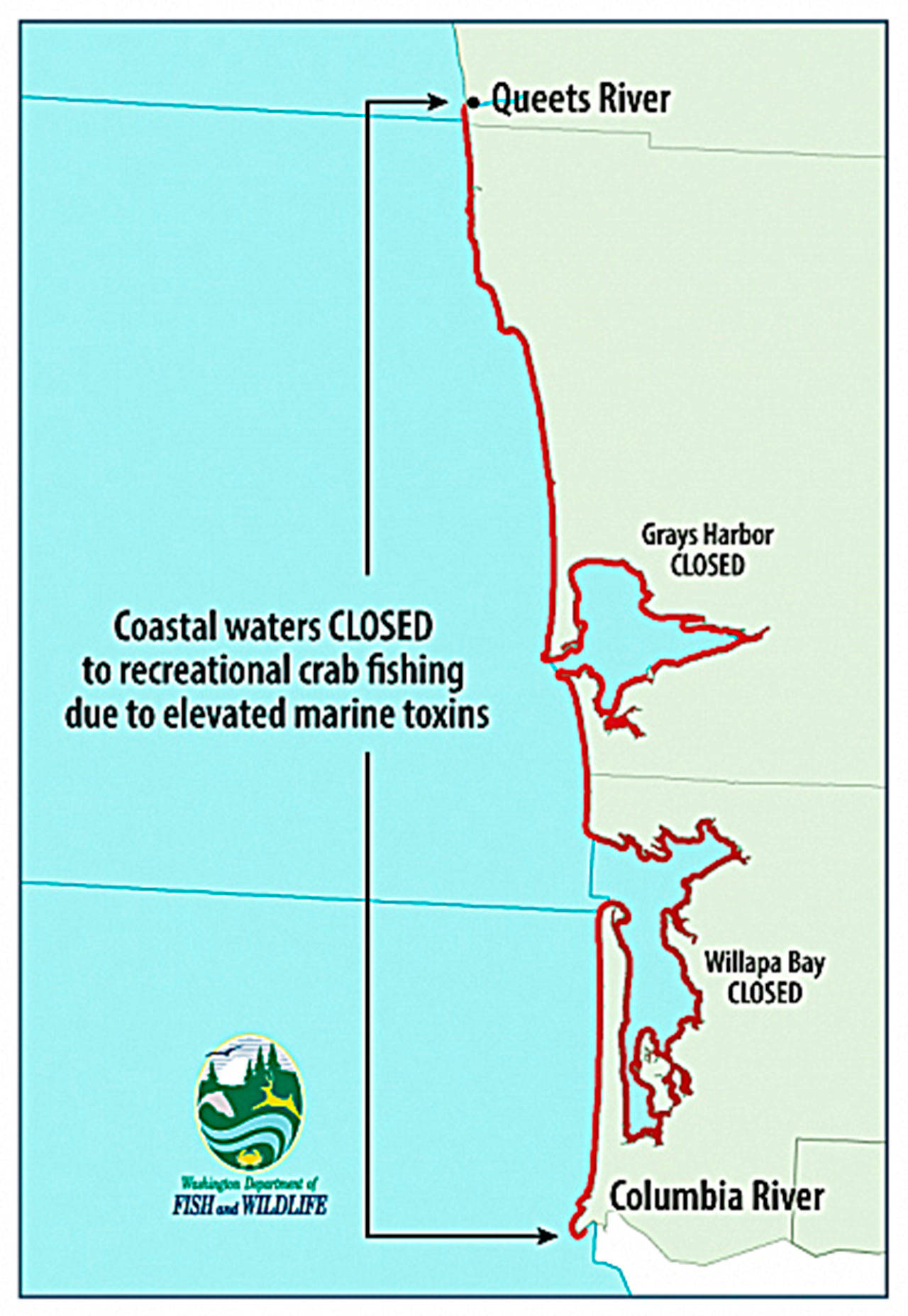Recreational Dungeness crab fisheries on the coast from areas north of Point Chehalis to the Queets River have closed due to elevated marine toxin levels, state shellfish managers announced Monday.
Previous closures remain in effect for Marine Area 1 (Ilwaco) and Marine Area 2 (Grays Harbor and Willapa Bay) due to elevated marine toxin levels.
“We wish we had better news, but our first priority is public safety,” said state Department of Fish and Wildlife coastal shellfish manager Dan Ayres. “The Department of Health will continue marine toxin sampling in all marine areas as weather and ocean conditions allow. Our decision on whether or not to open crabbing areas will be based on these sampling results.”
November and December closures represent the first time since 2015 that crab fisheries have been closed in Washington due to domoic acid, said Ayres. The toxin was first detected on the Washington coast in 1991.
Inside the Columbia River (from the outer jetty tips upriver) and Marine Area 3 (La Push) and Marine Area 4 (Neah Bay) remain open given acceptable test results so far, but crab fishers should keep an eye on the Fish and Wildlife website given high domoic acid levels in most other coastal waters.
Domoic acid, a natural toxin produced by certain types of marine algae, can be harmful and even fatal if consumed in sufficient quantities. Cooking or freezing does not destroy domoic acid in shellfish.
The state commercial Dungeness crab fishery is also closed and will be delayed until at least Jan. 14 in Washington coastal waters south of Point Chehalis, Grays Harbor, Willapa Bay and the Columbia River.
Harvesters can find up-to-date information on seasons and shellfish safety information on the Washington Shellfish Safety Map webpage, https://fortress.wa.gov/doh/biotoxin/biotoxin.html.
Levels of domoic acid have increased in coastal waters over recent months. Earlier this season, the department closed all Washington coastal beaches to razor clam digging due to high levels of the toxin.
The Department of Health recommends that crabbers who are fishing outside of the current closure area remove the crab viscera from their catch to avoid any exposure to possible toxins. All sport crab gear in the new closure areas must be removed or it will be subject to confiscation by Fish and Wildlife enforcement officers.
Regular testing of shellfish species found in the area — including oysters, hard-shell clams and mussels — shows those shellfish remain safe to eat. The exceptions are razor clams and Dungeness crabs.


